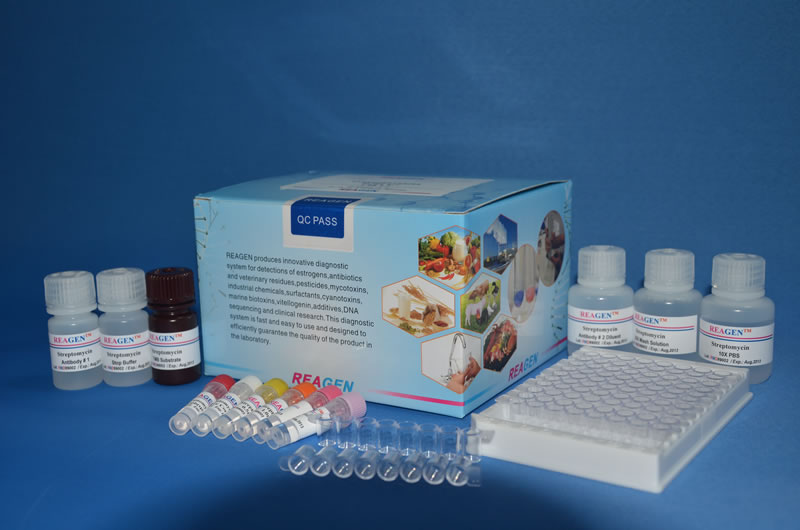A-MONOMETHYL-HIS H3 (LYS36) 100UL
货号: 07-548 产品名称: A-MONOMETHYL-HIS H3 (LYS36) 100UL 品牌: Millipore 规格: EA 三周到货 生化实验
Anti-monomethyl-Histone H3 (Lys36) Antibody
Close
REFERENCES
Lysyl oxidase-like 2 deaminates lysine 4 in histone H3.
Herranz, Nicolás, et al. (2012) Mol. Cell, 46: 369-76 (2012)
The target of the NSD family of histone lysine methyltransferases depends on the nature of the substrate.
Li, Yan, et al. (2009) J. Biol. Chem., 284: 34283-95 (2009)
Species Reactivity Key Applications Host Format Antibody Type
Vrt DB, IF, WB, Mplex Rabbit Serum Polyclonal Antibody
Description:
Anti-monomethyl-Histone H3 (Lys36) Antibody
Promotional Text:
Special Shipping Offer on Antibodies
100% Performance Guaranteed
Trade Name:
Upstate (Millipore)
Specificity:
monomethyl-Histone H3 (Lys36)
Molecular Weight:
17kDa
Immunogen:
Peptide containing the sequence GVmeKKP corresponding to monomethyl Lysine 36 of human histone H3 .
Modifications:
Methylation
Isotype:
IgG
Species Reactivity:
Vertebrates
Quality Assurance:
routinely evaluated by immunoblot in chicken core histones
Purification Method:
Antiserum
Presentation:
0.05% sodium azide and 30% glycerol
Storage Conditions:
2 years at -20°C
UniProt Number:
Q16695
Entrez Gene Number:
NM_003493
Gene Symbol:
H3F3A
MGC87783
H3.3A
MGC87782
H3F3
H3.3B
H3F3B
View All »
Alternate Names:
H3K36me1
Histone H3 (mono methyl K36)
Usage Statement:
Unless otherwise stated in our catalog or other company documentation accompanying the product(s), our products are intended for research use only and are not to be used for any other purpose, which includes but is not limited to, unauthorized commercial uses, in vitro diagnostic uses, ex vivo or in vivo therapeutic uses or any type of consumption or application to humans or animals.
View All »
Key Applications:
Dot Blot
Immunofluorescence
Western Blotting
Multiplexing
Entrez Gene Summary:
Histones are basic nuclear proteins that are responsible for the nucleosome structure of the chromosomal fiber in eukaryotes. Two molecules of each of the four core histones (H2A, H2B, H3, and H4) form an octamer, around which approximately 146 bp of DNA is wrapped in repeating units, called nucleosomes. The linker histone, H1, interacts with linker DNA between nucleosomes and functions in the compaction of chromatin into higher order structures. This gene contains introns and its mRNA is polyadenylated, unlike most histone genes. The protein encoded is a replication-independent member of the histone H3 family.
View All »
UniProt Summary:
FUNCTION: SwissProt: Q16695 # Core component of nucleosome. Nucleosomes wrap and compact DNA into chromatin, limiting DNA accessibility to the cellular machineries which require DNA as a template. Histones thereby play a central role in transcription regulation, DNA repair, DNA replication and chromosomal stability. DNA accessibility is regulated via a complex set of post-translational modifications of histones, also called histone code, and nucleosome remodeling.
SIZE: 136 amino acids; 15508 Da
SUBUNIT: The nucleosome is a histone octamer containing two molecules each of H2A, H2B, H3 and H4 assembled in one H3-H4 heterotetramer and two H2A-H2B heterodimers. The octamer wraps approximately 147 bp of DNA.
SUBCELLULAR LOCATION: Nucleus.
PTM: Acetylation is generally linked to gene activation. Acetylation on Lys-10 impairs methylation at Arg-9. Acetylation on Lys-19 and Lys-24 favors methylation at Arg-18 (By similarity). & Citrullination at Arg-9 and/or Arg-18 by PADI4 impairs methylation and represses transcription -20℃

